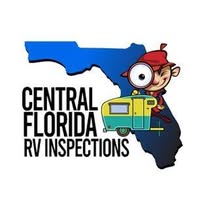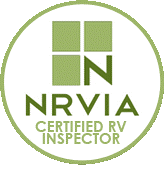Your engine, transmission and generator contribute a large portion to the overall cost of your RV and, as you probably know, the engine and transmission are essential to moving the RV around the country. Likewise, your generator provides the comforts of home. So, why take risks of something going wrong with these critically important components when it’s so easy and economical to get the data you need to ensure that your engine, transmission and generator stay as worry free, reliable and roadworthy as possible. Oil and coolant analysis allows owners to “see inside” the engine, transmission, and generator and adds a whole new level of diagnostics that you can’t get any other way.
Think of it as “Healthcare for RVs”. Internal parts depend on oils and coolants remaining stable and contaminant free between normal service intervals. Oil and coolant analysis is the only way to tell if there are any issues with oil or coolant breakdown and/or contamination that you should know about. Not only do we check oils and coolants for thermal breakdown, mechanical breakdown or contamination; but, we also check for internal part wear. Oil and coolant testing allows you to know about things that need your attention long before you get into issues that could result in costly repairs, road calls or lost travel time. Knowing the condition of your oils and coolants, either through initial inspection or follow-up annual sampling and analysis, improves the overall reliability of your RV drivetrain and generator systems. Quality RV Inspection’s oil and coolant analysis service, brings you the peace of mind that only comes with knowing for sure that your RV’s engine, transmission, and generator remain as “worry free” as possible.
Let’s say you own a large diesel pusher. In this case, the engine and transmission alone make up a large portion of the cost of your RV and they are absolutely essential to moving the RV down the road. So, why take a chance on something going wrong when it’s so economical to find out for sure that your engine, transmission, cooling system and generator stay as reliable and worry free as possible through periodic oil and coolant analysis. Think of it as “Healthcare for RVs”.
Oil and coolant analysis allows you to virtually “see inside” your engine, transmission, cooling system or generator and adds a whole new level of data and diagnostics that you just can’t get any other way. Internal parts depend on your oils and coolants remaining stable between service intervals. Oil and coolant analysis will tell you if you’ve got any issues with oil or coolant breakdown or contamination.
Not only do we check your lubes and coolants for any sign of thermal or mechanical breakdown or contamination; but, we also check it them for any sign of internal part wear. Oil and coolant analysis allows you to find things that may need your attention before you get into serious problems, road calls and lost vacation or travel time. Knowing the condition of your oils and coolants, through periodic sampling and analysis, improves overall reliability and gives you that peace of mind you’d like when it comes to knowing that you won’t have any unexpected problems with your engine, transmission, cooling system or generator.
Most service intervals (also known as Preventive Maintenance or “PM” schedules) call for oils and coolants to be changed based on accumulated mileage or on hours of use or elapsed calendar time. Changing oils and coolants is “generally” a good idea but often it’s not the most economical method of maintaining RV engine, transmission or generator fluids.
 Let’s say the fluids were changed too soon or before it’s necessary. If there’s still plenty of life left in them, that’s like throwing money down the drain. On the other hand, if you fail to change fluids when they’re worn out or contaminated, you take the chance of getting into some serious problems that can put your RV in the shop and drain your wallet. If you’re changing oils and coolants without having them analyzed, you’re missing out on some pretty important information that could make a real difference in your plans.
Let’s say the fluids were changed too soon or before it’s necessary. If there’s still plenty of life left in them, that’s like throwing money down the drain. On the other hand, if you fail to change fluids when they’re worn out or contaminated, you take the chance of getting into some serious problems that can put your RV in the shop and drain your wallet. If you’re changing oils and coolants without having them analyzed, you’re missing out on some pretty important information that could make a real difference in your plans.
Oil and coolant analysis is a useful diagnostic tool that offers you and your service technician a whole new level of understanding. It allows you to see inside the equipment and determine the true condition of your engine, transmission and generator. It improves your ability to assess these critical RV systems for wear and contamination that could lead to early failures if left unchecked. Fluid analysis enables you to observe systems at a “microscopic level”. This greatly improves your ability to learn about issues that need your attention so you can have them fixed at the earliest opportunity, long before serious problems occur. You’ll know when oils and coolants begin to break down or become contaminated and you’ll be able to see internal part wear issues if they exist.
In short, oil and coolant analysis increases your ability to detect minor problems and schedule repairs, if needed, before they result in breakdowns, repairs and lost travel opportunities. You just can’t get that from draining and replacing your RV oils and coolants.
Oil analysis measures additive levels, wear metals, contaminants (such as water or internal coolant or fuel leaks), soot levels, viscosity, oxidation, and nitration. First, the oil is checked for viscosity loss (thinned out oil) and thermal breakdown (too much heat). We also check for signs of fuel and coolant caused by faulty injectors or leaking head gaskets and we check for nitration that may indicate improper fuel/air mixtures. We can tell all of that from the analysis plus we can detect the early stages of wear on internal parts. Periodic oil analysis enables you to find these problems in the early stages long before real damage occurs.
Quality RV Inspection offers advanced oil analysis, designed to give you data that allows you to tell if your current oil and coolant service intervals are correct. The data will show if you’re changing too soon or if you’re running too long between service intervals. There are (2) reasons why this is so important. First, advanced oil testing gives you the data you need to save money by safely extending service intervals. In fact, some Class-A “Diesel Pusher” (DP) owners are already running up to 25,000 miles between engine oil changes. Secondly, let’s say you purchased a used Class A with an Allison transmission. Advanced testing can show you whether or not you’re running the Allison “long life” approved fluid. If the transmission fluid test shows you’re running an older technology DEXRON-III type transmission fluid, you’ll have the data you need to support changing the fluid over to the long life (Allison TES-295 approved) product and save even more money over the life of your motorhome.
Coolant analysis measures glycol content, additive levels, Freeze Point, Boiling Point, total hardness and dissolved solid levels (mineral content). These tests tell you everything you need to know to fully evaluate your engine cooling system. We’ll tell you if a coolant change is needed and why we think it’s necessary.
You’ll receive detailed test reports of the analyses along with comments and recommendations to explain the findings. Your reports are emailed to you and reports are marked by level of Severity. They’re “color-coded” so it’s easy to spot problems (if we find any). The color code indicates the overall severity of the sample from 0 to 4 (with 0 meaning everything’s fine and no further action is required). On the other hand, a Severity Rating of 4 indicates a “Critical” finding with immediate actions needed to correct the problem. The color on the Severity rating scale is matched to the data so it’s easy to spot the problem that led to the overall Severity Rating. You also get easy to understand comments and recommendations that instruct you on what was found and what you should do about it.
Note: If you have specific questions about your report, we offer a toll free Customer support number at 877-251-8315. This number is staffed by JG Lubricant Services lab professionals who are trained to route your call to the Analytical Department where your question will get prompt attention.
Just call me, Art Horton, at (386) 562-8721. Tell me you’d like to add oil and coolant analysis to your upcoming RV inspection. I’ll pull samples, send them in to our contracted lab for analyses and your reports will be in your email in-basket in no time.
The chart below shows Recommended Sampling Intervals for RV engines, transmissions and generators. If you’re still in my area, just give me call and I’ll come and pull your samples when they’re due. Otherwise, if you’re not in my area, you find your nearest NRVIA certified inspector at https://nrvia.org/locate/. Then, just keep copies of your test reports in your maintenance file. We’ll maintain the records electronically in our lab database.
SAMPLING RECOMMENDATIONS | ||
Component | Sample Type | Recommendation |
ENGINE | Oil | Every scheduled oil change |
Coolant | Annually (at start of travel season) | |
TRANSMISSION | Oil (fluid) | Annually (at start of travel season) |
GENERATOR | Oil | Every scheduled oil change |
Coolant | Annually (at start of travel season) | |
Your initial exposure to oil or coolant test reports might be a little overwhelming. Here’s some suggestions as to how to review your test reports to help you get the most from your data.
- First, look at the Severity Code. It’s located in the upper right hand corner of your test report. The purpose of the Severity Code is to let you see the overall findings “at a glance”. The Overall Severity Rating is listed as “color-coded” ranges with numbers (0 thru 4). The chart below lists the various Severity Codes and how to interpret the results. Note: It’s not really important at this time that you understand the actual test values. Instead, it’s more important to know whether the sample is NORMAL, ABNORMAL or CRITICAL as all of the test values have been taken into account as part of the Overall Severity Rating.
| Overall Severity Rating | Severity Range | How to Interpret Your Results |
| NORMAL | 0 to 1 | Indicates your sample tested within normal range limits1 established for samples in similar equipment applications |
| ABNORMAL | 2 to 3 | Indicates your sample tested outside normal range limits established for samples in similar equipment applications. |
| CRITICAL | 4 | Indicates your sample tested outside abnormal range limits and that the sample shows a problem, or problems, that need immediate maintenance actions as covered in the Comments Section of the report. |
- Next, read the Comments Section. The Comments Section tells you what the testing revealed and what our laboratory data analysts have to say about the results. Here, you’ll also find maintenance recommendations. Recommendations may suggest immediate action or it may suggest continuing to run the oil or coolant for additional time. The Comments Section should help you the most as it tries to pinpoint problems and it contains the most information and as “straight talk” as possible about your sample.
- Last, look at the actual data and note the color coded boxes. The colors match up with the overall Severity Rating and point to problems and concerns found with your sample.
What does it mean if my report shows “Missing Information”?
The information, listed at the top of your test report (see example below) may show “Missing Information” in either the Filter or Product Information boxes. Customers sometimes worry that this may indicate that the report is somehow no good or of little value. However, nothing could be further from the truth. Even without the information about the filter oil the oil or coolant type, your test report is still meaningful and a valuable part of the RV inspection. Why do we say this? Because oil and coolant test reports, from JG Lubricant Services, are designed to give as much information about your RV’s engine, transmission, generator and/or cooling system as possible and tell you if there are any issues that may need further attention before you sign on the bottom line.

Unfortunately, RV sellers may often be unaware of the type of oils and/or coolants currently in the various RV systems. As an example, consider your own personal vehicles. Unless you happen to be a “gear head” or a really ambitious “Do It Yourself” (DIY) that does their own oil, coolant and filter changes, this information is typically unknown. Most folks use the DIFM (Do It For Me) method. They take their vehicle to the local Jiffy Lube or their favorite service center and let them do the dirty work. They put a sticker on the window that tells you the odometer reading or calendar time when your next change is due. Consequently, most folks have no idea what’s in the engine or generator crankcase, the transmission sump or the cooling systems. However, for inspection purposes, that’s still OK. It would be nice to have this information if possible; but, it’s not necessary. If oil and coolant type are known, the lab can also tell you if the oils or coolants can be safely run longer to save money. That’s why it’s always a good idea to keep doing fluid analysis on your RV after you make the purchase.
NRVIA Certified RV Inspectors have been trained to enter as much information as possible about the RV equipment. This enables the lab to do a better job of keeping an historical record of the oil and cooling system inspections. Information includes such things as Vehicle Identification Number (VIN), RV make, RV model, vehicle odometer reading, generator hour meter reading, and engine, transmission and generator makes and models. Even with all this effort, the simple fact is that, on most used RVs, details about oil and coolant manufacturers, brand names, viscosity grades, and coolant types is often unknown. This is true whether we inspect an RV that’s sitting on a dealer’s lot or if the RV is being sold by an individual in their driveway.
Fluid Analysis test reports are designed to point out any major issues and educate you as to anything that might be of concern prior to your purchase. The exact type oil or coolant is typically not required to make those kinds of observations. As stated on the first page, look at the Severity Code. If it’s in the normal range, the oil and/or coolant test came back OK. If it’s abnormal or critical, the comments will explain what was found and what to do about it. Don’t worry if your test report happens to show the words “Missing Information”. It’s typical of most used RV test reports and has no effect on the value of your test report. The reports give you valuable information about your RV drivetrain and generator systems that most other RV inspection services don’t even address. Most others will only pull the dipsticks and tell you whether or not oil or coolant is present in the systems and that’s it.
1 Range limits are established through statistical methods proprietary to our contracted testing laboratory.

